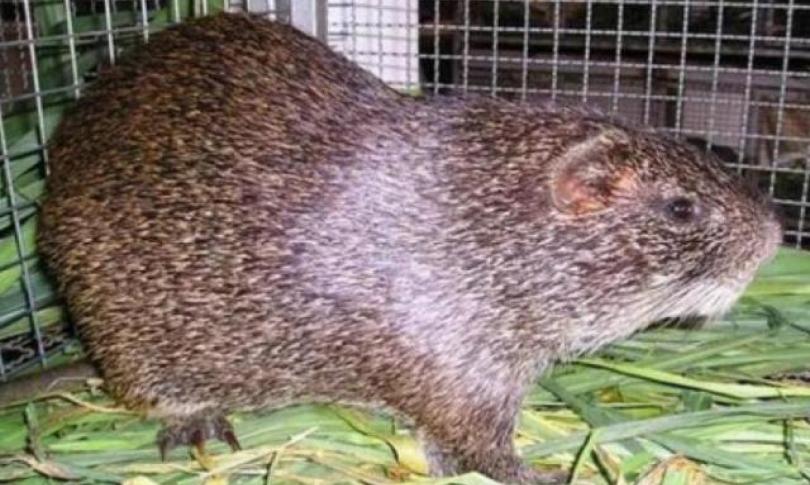
In Ghana and other parts of West Africa, the greater cane rat popularly known as grasscutter is a highly patronized delicacy for many due to its great taste and protein content, but now researchers and scientists are warning that consuming grasscutter poisoned with either yellow oleander root power or carbofuran could be detrimental to human health.
Grasscutter is usually sold dried or fresh by hunters on highways and various markets in West Africa. The game animal is either killed by a gun or poisoned through baiting by hunters. Researchers say the meat is consumed widely and is reported to have contributed to over 80% of animal protein consumed in some countries in Africa. The carcasses of the grasscutters is reported to have contributed about 75% by weight of game meat sales in “Kantamanto”- market in Accra, Ghana, for a period of 25 years.
Over the years, the high patronage of grasscutter meat resulted in the inclusion of grasscutter on the export trade of Ghana by the Ghana Export Promotion Council (GEPC) since 1974. In a recent survey to ascertain the level of animal protein consumption by the Ghanaian public indicated that 50 percent of Ghanaians prefer grasscutter to other game animals.
But the use of poisonous substances in hunting bushmeats does not only pose danger to the animals but also poses serious health problems to the unsuspecting public.
Published in Veterinary Medicine and Science journal Wiley in March 2020, by the Department of Nutrition and Dietetics, University of Health and Allied Sciences, Ho in Ghana, the use of Furadan 3GR and carbofuran in capturing grasscutter causes abdominal pain and blur vision in humans. The paper which surveyed 200 hunters saw 55 per cent of them confirming the usage of these poisonous baits in hunting game animals due to scarcity of wild animals as a result of deforestation of many natural habitations.
Speaking to Edward Essuman a food scientist at the University of Health and Allied Sciences in Ho and a co-author of the paper, says these chemicals used in catching bush meats are endangering many lives especially the section of the public that eat in “chop bars” – eateries outside home. “No amount of heat applied to these chemicals can reduced the level of potency of the chemical used in trapping the meat” he stated.
Checks from some local eateries in Accra to ascertain consumers level of knowledge on safety of what they consume almost daily, reveals most of them do eat the game because of its great taste and protein content. “I eat grasscutter because of the great taste and protein content. I don’t have any idea about how it is trapped” Marvin Oduro asserts, as he had just finished eating some.
Anthony Azaglo, a grasscutter farmer at Somanya,- a suburb of Eastern Region of Ghana says, the use of poison in capturing game animals is rife in rural Ghana because the public have less knowledge about the trends of hunting. Adding, the primitive methods are not fetching the desired results the hunters’ wants as the depletion of the country’s forest covers continued. For him, many grasscutter lovers who are cautious on their health will prefer buying from the farmers themselves for consumption.
Available literature by opara et tal in 2010, suggests some local market in Ghana had about 73 tons of grasscutter meat sold within a year. Indicating, a ‘mad rush’ for the game although many consumers of grass cutter are falling prey to food poisons but could not relate it to the exact food that contained the harmful substances.
Reginald Annan a lecturer in Nutrition at the department of biochemistry and biotechnology, collage of sciences, Kwame Nkrumah University of science and Technology in Kumasi, says the game meat aside its high protein content also serves as a source of income for many rural dwellers. Hence, to protect the contribution made by bushmeat to the human diets and also reduce poverty and malnutrition in rural areas, rigorous education must be done to curb unscrupulous methods of meat hunting. “To step up the production of some non-traditional animals such as grasscutters due to its high patronage as a delicacy and contribution to the rural folks more education need to be done”.
